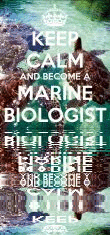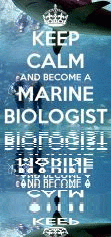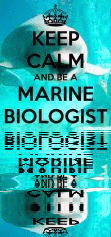
Look at any population map and you can see that mankind has always been drawn to the sea. Oceans have been crucial to the human diet and migration. The earliest  known stone blades some dating back as far as 165,000 years old, were discovered in a seaside cave in South Africa next to a pile of clam shells indicating their likely use. Ancient shell and bone harpoons along with fish-hooks have also been found. The Greek philosopher and scientist Aristotle, is considered by some to be the first marine biologist. He documented and described many forms of marine life. During the Renaissance, Europeans in particular began to support a great deal of exploration. Christopher Columbus “discovered” the New World in 1492 (actually Vikings had found the same area as early as 995 A.D.) and Ferdinand Magellan began his expedition to sail around the world in 1519. With all this ocean exploration, curiosity arose about the ocean and the things that lived within it. Explorers began to take naturalists along on their voyages to make scientific
known stone blades some dating back as far as 165,000 years old, were discovered in a seaside cave in South Africa next to a pile of clam shells indicating their likely use. Ancient shell and bone harpoons along with fish-hooks have also been found. The Greek philosopher and scientist Aristotle, is considered by some to be the first marine biologist. He documented and described many forms of marine life. During the Renaissance, Europeans in particular began to support a great deal of exploration. Christopher Columbus “discovered” the New World in 1492 (actually Vikings had found the same area as early as 995 A.D.) and Ferdinand Magellan began his expedition to sail around the world in 1519. With all this ocean exploration, curiosity arose about the ocean and the things that lived within it. Explorers began to take naturalists along on their voyages to make scientific  observations along the way. Captain James Cook who coincidentally was killed and partially eaten by Hawaiians after being mistaken as a god, was one of the first of the early explorers to document their scientific observations of their journey. He was the first to use a chronometer or accurate timepiece, enabling him to accurately determine his longitude and prepare reliable charts. He also brought back specimens of plants and animals from his journeys. The most famous naturalist to travel aboard a ship was Charles Darwin. In 1831, Darwin sailed around the world on the HMS Beagle for five years making detailed observations of the natural world. It was his experiences on the Beagle that allowed Darwin to formulate his theory of evolution by the process of natural selection.
observations along the way. Captain James Cook who coincidentally was killed and partially eaten by Hawaiians after being mistaken as a god, was one of the first of the early explorers to document their scientific observations of their journey. He was the first to use a chronometer or accurate timepiece, enabling him to accurately determine his longitude and prepare reliable charts. He also brought back specimens of plants and animals from his journeys. The most famous naturalist to travel aboard a ship was Charles Darwin. In 1831, Darwin sailed around the world on the HMS Beagle for five years making detailed observations of the natural world. It was his experiences on the Beagle that allowed Darwin to formulate his theory of evolution by the process of natural selection.
The most important exploratory expedition of the early United States was the  “Wilkes Expedition” of 1838-1842. The exhibition started 1,500 miles of the coast of Antarctica, confirming it as a continent. It also charted the coasts of the Pacific Northwest of North America and explored over 280 islands of the South Pacific. The eleven naturalists and artists aboard collected some 10,000 specimens, over 2,000 of which were previously unknown species. This expedition which was the first international survey sponsored by the US government, laid a foundation for government funding of scientific research. By the mid 1800’s, some scientists were able to afford voyages solely for the purpose of scientific research. One of the most notable is that carried out by British scientist Edward Forbes. He conducted extensive dredging of the sea floor. In doing so, he discovered many previously unknown organisms and recognized that the sea floor varies at different depths. Forbes work inspired the British government to fund the first major oceanographic
“Wilkes Expedition” of 1838-1842. The exhibition started 1,500 miles of the coast of Antarctica, confirming it as a continent. It also charted the coasts of the Pacific Northwest of North America and explored over 280 islands of the South Pacific. The eleven naturalists and artists aboard collected some 10,000 specimens, over 2,000 of which were previously unknown species. This expedition which was the first international survey sponsored by the US government, laid a foundation for government funding of scientific research. By the mid 1800’s, some scientists were able to afford voyages solely for the purpose of scientific research. One of the most notable is that carried out by British scientist Edward Forbes. He conducted extensive dredging of the sea floor. In doing so, he discovered many previously unknown organisms and recognized that the sea floor varies at different depths. Forbes work inspired the British government to fund the first major oceanographic expedition using a retrofitted navy warship named the HMS Challenger. In 1872, the HMS Challenger began a three-year expedition around the world gathering information and collecting samples. The volume of data gathered was so massive that it took nearly nineteen years to publish the results of the expedition. The expedition set a new standard for oceanic study and laid the foundation for modern marine science.
expedition using a retrofitted navy warship named the HMS Challenger. In 1872, the HMS Challenger began a three-year expedition around the world gathering information and collecting samples. The volume of data gathered was so massive that it took nearly nineteen years to publish the results of the expedition. The expedition set a new standard for oceanic study and laid the foundation for modern marine science.
As an alternative to working on boats where specimens could only be collected and preserved and long-term observations were impossible, many scientists began to conduct their studies along the shoreline. Eventually, permanent laboratories were developed on coastlines where live organisms could be kept and scientists could conduct their studies and observations over longer periods of time. The first of these labs was the Stazione Zoological founded  in Naples, Italy in 1872. The first American marine laboratory was the Marine Biological Laboratory at Woods Hole, Massachusetts. The Woods Hole Laboratory remains today, as one of the world’s most prestigious marine labs. During World War II, the development of a new technology called sonar or sound navigation ranging, was developed in response to the concern about submarine warfare. Sonar is based on the detection of underwater echoes and following the war, advances were made in apparatus used to allow people to spend extended periods of time underwater. This technology would come to be called Scuba (Self-contained Underwater Breathing Apparatus). The basic technology was developed to compress natural gas for automobiles by the French engineer, Émile Gagnan. Gagnan and fellow Frenchman Jacques-Yves Cousteau, modified the apparatus to compress air allowing for underwater exploration at relatively shallow depths of less than 165 feet.
in Naples, Italy in 1872. The first American marine laboratory was the Marine Biological Laboratory at Woods Hole, Massachusetts. The Woods Hole Laboratory remains today, as one of the world’s most prestigious marine labs. During World War II, the development of a new technology called sonar or sound navigation ranging, was developed in response to the concern about submarine warfare. Sonar is based on the detection of underwater echoes and following the war, advances were made in apparatus used to allow people to spend extended periods of time underwater. This technology would come to be called Scuba (Self-contained Underwater Breathing Apparatus). The basic technology was developed to compress natural gas for automobiles by the French engineer, Émile Gagnan. Gagnan and fellow Frenchman Jacques-Yves Cousteau, modified the apparatus to compress air allowing for underwater exploration at relatively shallow depths of less than 165 feet.